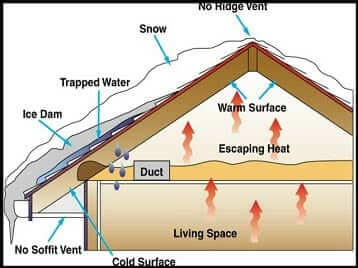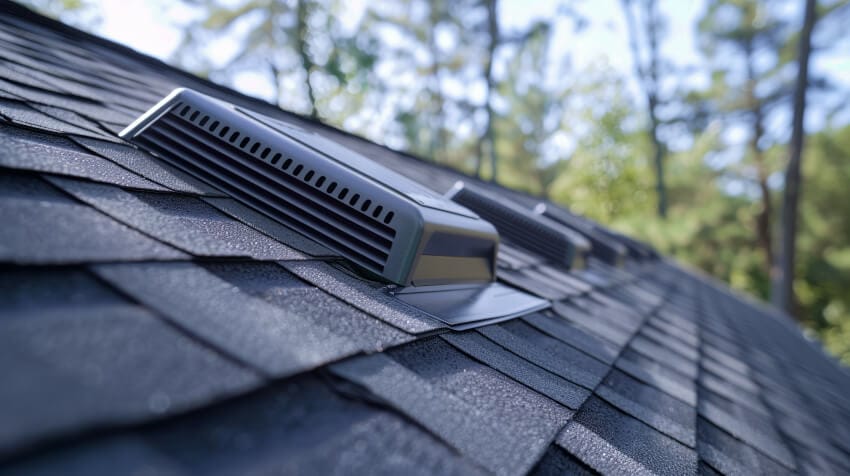Attic ventilation is the process of allowing air to flow through your attic system, which helps to prevent moisture from building up and causing damage. Attic Ventilation System is important for all types of roofs and for various reasons. As winter approaches, let’s focus on preventing condensation and ice dams.
Typically an attic is ventilated with roof vents near the peaks of the roof for exhaust, and with under eave vents (soffit vents) for intake. There are a number of types of roof vents, each with specific purposes. Static roof vents, also known as box vents, turtle vents, and numerous other slang terms are the most common. There are also ridge vents, turbine vents, and electric powered vents. Ridge vents are designed for areas with vaulted ceilings. Turbine vents and electric powered vents provide more ventilation than standard static vents. Both of these types of vents are typically used where there are limited roof areas to place vents.
How to Choose the Type of Vents for your Attic Ventilation System
All of these types of vents are effective ways to ventilate an attic. However, the type of vent that you choose should depend on your specific needs.
Bathroom vents should be vented to the outside of your home. Many don’t consider what damage is caused by moist air from your bathroom being transferred into the attic space. We can provide you with a solution for this by installing duct from a roof vent that you can attach to the inside bathroom fan, thus preventing moisture depositing into your attic from your bathroom.
Condensation is a problem that usually occurs in cold weather season. Check your humidifier, if your furnace has one, and adjust it to a “winter” setting. Contact your heating and cooling contractor if you need help. Otherwise, you are setting up a situation which could cause condensation to appear on your ceiling.

Finally, ice dams, which are evident by frozen ice appearing in the lower areas of your roof. Ice dams can be avoided, or at least made less likely to occur by proper ventilation. Ideally, your attic should be as close to the outside temperatures as possible which is achieved by proper ventilation. As precipitation freezes and thaws, ice dams may occur. As the name implies, water can be “dammed up” and thus create leakage. Shingles are made to “shed” water, not hold it. If you see icicles, note the areas and call us for an estimate on what we may be able to do.
An attic ventilation system is important. By ventilating your attic space, you can help to prevent moisture damage.
Here are some of the benefits of attic ventilation:
- It helps to prevent moisture damage. Moisture damage is the leading cause of roof failure. By ventilating your attic, you can help to prevent moisture from building up and causing damage.
- It helps to extend the life of your roof. A well-ventilated attic will help your roof last longer by avoiding excessive heat buildup in the summer.
- It can save you money in the long run. By preventing roof damage, you can avoid costly repairs and replacements.
- It can improve the comfort of your home. A well-ventilated attic will help to keep your home cooler in the summer and warmer in the winter.
If you are not sure whether or not your attic is adequately ventilated, you should have it inspected by a professional roofing contractor. A roofing competent contractor can assess the ventilation of your attic and roof and recommend the best course of action for your attic ventilation system.

